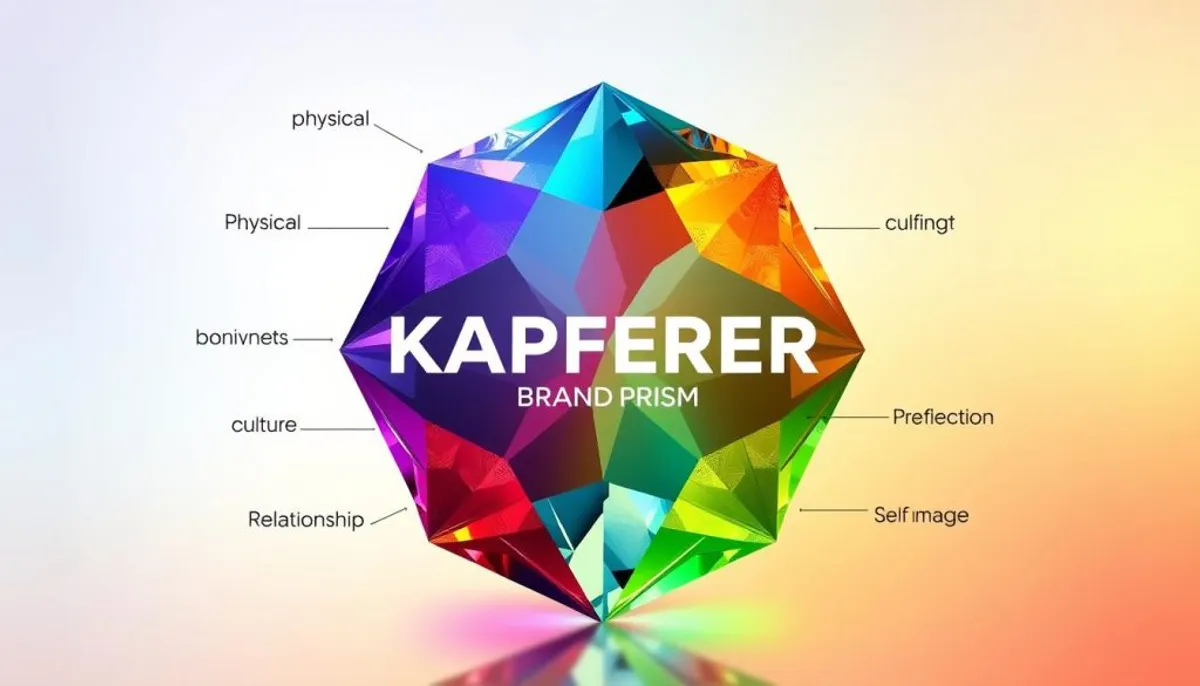
The brand identity is the core of your business. It determines your image and shapes the perception of consumers. A successful marketing strategy relies on an identity marked by its strength and coherence.
Creating an authentic brand culture is crucial to stand out in a saturated market. It encapsulates your values, your vision, and your distinct personality. This is what differentiates you and creates an emotional connection with your customers.
In this article, we will explore the essential elements of brand identity and how to build it. You will discover the importance of a strong company culture and its role in your long-term success.
Understanding the essence of brand identity
Brand identity is the vital soul of a company. It includes its mission, vision, and interaction with customers. To create a strong brand, it is essential to know its key components and understand the associated strategic stakes.
Definition and essential components
The components of brand identity include visual and conceptual elements. The logo, colors, and typography constitute the first contact with the public. In 2024, audio branding becomes a strategic tool for providing an immersive experience. The company's mission statement and vision play a crucial role in a striking identity.
The strategic stakes of a strong identity
A strong brand identity allows you to stand out in a competitive market. SWOT analysis helps identify the strengths and weaknesses of a brand, revealing its unique character. Distinct positioning fosters customer loyalty. Consistency among the various elements of identity is essential for a successful branding strategy.
The impact on consumer perception
A strong identity positively influences the perception of consumers. It creates a lasting emotional bond with the target audience. For example, Apple embodies innovation with its sleek designs, while Patagonia reflects values of sustainability. The perception of consumers is crucial for brand recognition and loyalty, which are essential for long-term success.
| Brand | Identity Element | Impact on Perception |
|---|---|---|
| Nike | “Swoosh” Logo | Dynamic and performance-oriented |
| Chanel | Sleek Design | Elegance and sophistication |
| Rolex | Brand Image | Success and high social status |
The Kapferer prism: foundation of brand culture
The Kapferer prism, developed by Jean-Noël Kapferer in 1992, is a fundamental tool for determining the essential dimensions of brand identity. This framework identifies six key components, serving as a basis for a solid and coherent company culture.

The physical and personality dimensions
The physical dimension concerns the tangible aspects of the brand, such as the logo and products. The iPhone, for example, stands out for its minimalist design. The personality, on the other hand, gives the brand traits that are perceptible to consumers.
Culture and mentalization
The company culture encapsulates the core values of the brand. Toyota illustrates this idea with “The Toyota Way.” Mentalization, on the other hand, concerns the image that customers form of themselves in relation to the brand, influencing their perception and association with it.
The reflection and customer relationship
The reflection is the image that the brand projects of its target audience. The customer relationship defines the interaction between the brand and its consumers. These aspects are essential for forging a strong and lasting brand identity.
| Prism Element | Description | Example |
|---|---|---|
| Physical | Visual characteristics | Logo, colors, packaging |
| Personality | Character traits | Innovative, reliable, adventurous |
| Culture | Core values | Sustainability, excellence, creativity |
| Mentalization | Customer self-image | Sophisticated, eco-friendly |
| Reflection | Representation of the target audience | Urban youth, active families |
| Relationship | Brand-customer interaction | Proximity, trust, loyalty |
The Kapferer prism offers a structured method for developing a distinct brand identity. By aligning these six elements, companies can create a strong brand culture, aligned with their mission and capable of evolving over time.
Building a coherent visual identity
The visual identity forms the foundation of a strong brand. It encompasses all graphic aspects that embody your company and express its core values.
The graphic charter as a pillar
The graphic charter is an essential document that establishes guidelines for using your visual identity. It details the logo, color palette, fonts, and image style. This graphic coherence is crucial for the recognition of your brand.
Distinctive visual elements
The logo is the key element of your visual identity. It must be memorable and reflect the soul of your brand. The colors and typography should harmonize with your values, creating a coherent image.
Harmonizing communication materials
A successful visual identity must be uniformly applied across all communication channels. This includes your website, social media, marketing materials, and signage. This uniformity reinforces familiarity and trust among customers towards your brand, while also recalling the origins of religious traditions that often influence brand values.
| Medium | Importance of Visual Identity |
|---|---|
| Website | Crucial first impression |
| Social Media | Instant recognition |
| Marketing Materials | Reinforcement of brand image |
| Signage | Visibility in physical space |
By developing a strong and coherent visual identity, you stand out from the competition. This enhances your company's visibility. It is imperative that each visual component faithfully conveys the core values of your brand. For those wondering how to succeed in general culture, understanding the importance of this visual coherence is essential.
Employee engagement as ambassadors
Employee engagement is essential for strengthening company culture and brand image. Involved employees become brand ambassadors, embodying the company's values on a daily basis. This creates synergy between the company and its employees, thereby enhancing engagement and loyalty.
Statistics demonstrate the significant impact of employee ambassadors:
- Employee posts on social media generate 8 times more engagement than those from executives.
- A group of 20 internal ambassadors can reach up to 5,000 people.
- The cost of an employee ambassador is 10 times lower than that of paid advertisements.
These figures highlight the importance of employee advocacy in the communication strategy. By encouraging employees to share their experiences, the company benefits from expanded reach and increased credibility. This strengthens the trust of potential customers and candidates.

- Clearly communicate the company's vision and values
- Provide training on the use of social media
- Recognize and reward top ambassadors
- Encourage the development of employees' personal branding
By involving employees in promoting the brand, the company strengthens its corporate culture. This improves its image with potential customers and candidates. This authentic approach helps create a strong and attractive employer brand.
| Indicator | Impact of Employee Ambassadors |
|---|---|
| Engagement on social media | 8 times higher than corporate posts |
| Message reach | 561% greater than corporate messages |
| Lead conversion rate | 7 times higher |
| Trust granted | 2 times higher than for a CEO |
Developing an authentic company culture
Creating an authentic company culture is crucial for attracting and retaining talent. Indeed, 84% of professionals consider culture to be a decisive factor in choosing an employer. A strong culture translates into shared company values and authentic leadership.
Alignment of internal and external values
The harmony between internal and external values is essential. It strengthens the coherence of the brand image and fosters stakeholder trust. Companies that highlight their culture on social media see their unsolicited applications increase by 50%.
The role of leadership in company culture
Authentic leadership is the cornerstone of a solid company culture. Leaders must embody the values daily to inspire their teams. However, only 30% of HR leaders believe their company has developed the necessary culture to improve performance.
Creating a positive employee experience
A positive employee experience is fundamental. Companies focused on the well-being of their employees report 22% higher productivity. Moreover, those that encourage professional development observe a 19% increase in work engagement.
| Aspect | Impact |
|---|---|
| Strong company culture | 33% increase in retention rate |
| Employee well-being | 22% more productivity |
| Professional development | 19% increase in engagement |
By developing an authentic company culture, organizations create an environment conducive to the flourishing of their employees. This approach fosters not only performance but also the attraction and retention of talent in a competitive labor market.
Conclusion
Building a strong brand identity is essential for contemporary businesses. Data shows that 80% of recruiters emphasize the importance of company culture in attracting talent. In France, 83% of employees believe that aligning with their employer's values is crucial.
A successful branding strategy requires a comprehensive vision. The IPSE model (Ideology, Personality, Symbol, Emblem) provides a framework for developing a coherent identity. Alignment between internal culture and external image is key. This creates an authentic company culture, reinforcing brand credibility.
The transition to collaborative brand management is vital. Companies must promote co-creation and allow individuals to identify with the brand. This approach enriches the brand identity and strengthens the connection with consumers. It also encourages employee engagement, turning them into true brand ambassadors.
RelatedRelated articles


